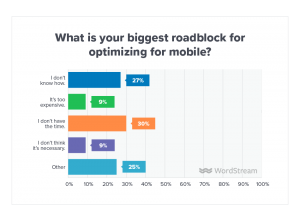The social media revolution, which has been sweeping the world since the middle of the last decade has slowly been transforming the way businesses and customers interact. Combined, the number of users of the Big Six social networks (Facebook, Twitter, LinkedIn, Instagram, Google+, and Pinterest) exceeds 2.4 billion people. The largest of which, Facebook, would be the second most populous country on the planet, after China.

Reconsidering Assumptions
As a strategy, engaging and winning customers on social networks is often incorrectly described as ‘free’ marketing. This isn’t really the case, not after considering the fact that implementing a social media strategy requires time, content and staff to take the lead online.
Another incorrect assumption is that social media marketing often generates the idea that an ROI should be near instantaneous and easy to measure. Tweets do not, by themselves, generate sales. Likes do not mean that a customer is about to make a purchase. Measuring a positive impact of your activities will take time so anticipate a cumulative effect from what you do, not instant.
Almost all social networks now offer advertising and paid-for targeting as an option. The different ways you can target customers across the various social networks is outlined below.

Pay-per click (PPC) advertising is a simple way to get started on social networks since ROI can be measured directly from a marketing spend. The challenge when it comes to creating your social media presence comes down to four factors: strategy, voice, implementation and measuring. Here is how you can tackle each of these challenges:
1. Define Your Social Media Strategy
Launching a social media campaign, whether organic (interacting with people online, creating and sharing interesting content) or through advertising, without a clear strategy is a common mistake that can lead to poor ROI.
Before you start on social, decide what your objectives are. Ask yourself what are you offering to your audience and how does it benefit them? How does social tie into your overall campaign goals? Which network(s) are right for you? Who is your audience and how you are going to target them? And most importantly, how are you going to dedicate the right resources / team members who can implement a suitable strategy?
2. Identify Your Unique Voice
Online, there is more value in less. Every word counts. Your tone and the crucial elements of your brand’s voice, need to be conveyed in a short, friendly, engaging and consistent manner. Each Tweet, status update and image is a reflection of your brand values, which is why special attention has to be paid to how your voice is conveyed online.
4. Make an Investment
Determining your readiness for social media is based on a simple question: how much can I invest in this strategy? Who will implement this? Do we have the skills? Like with anything, you get what you pay for. Creating engaging content is an investment, as is tasking staff or external agencies to manage a social media strategy strategy. It will pay off. It takes time, as the results are cumulative, which means it is worth expecting to play the waiting game when it comes to launching a social media strategy.
5. Measure Your Efforts
Taking the above into consideration means knowing what to measure and how to modify tactics as you move forward. The individual impact of certain metrics, like the number of followers, likes, re-tweets, carry different weights depending on who you speak to. Some so-called ‘experts’ will give these metrics great importance, whereas some will focus on the quality of your followers and engagements over quantity.
Ultimately, it depends on your goals and objectives: what do you want to accomplish and when do you want to achieve that? Create suitable metrics which matter to your business around the answers to these questions.
Digital & Social Articles on Business 2 Community
(67)






